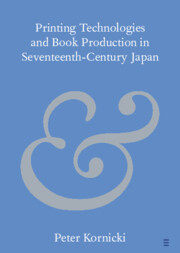Element contents
Printing Technologies and Book Production in Seventeenth-Century Japan
Published online by Cambridge University Press: 14 January 2025
Summary
- Type
- Element
- Information
- Online ISBN: 9781009495493Publisher: Cambridge University PressPrint publication: 30 January 2025

